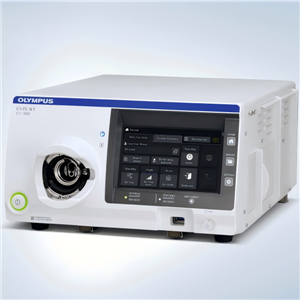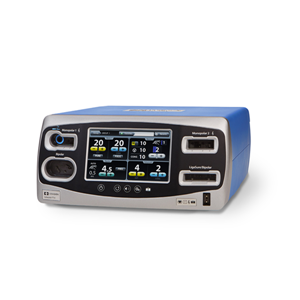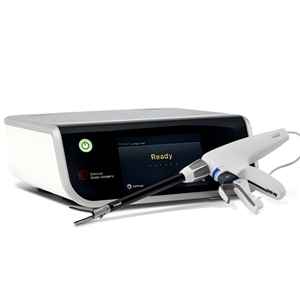Total gastrectomy as a risk factor for postoperative loss of skeletal muscle in minimally invasive surgery for patients with gastric cancer
Abstract
Purpose
Loss of skeletal muscle mass after gastrectomy for gastric cancer leads to decreased quality of life and poor postoperative survival. However, few studies have examined the postoperative loss of skeletal muscle mass following minimally invasive gastrectomy. This study investigated the impact of minimally invasive total gastrectomy (MI-TG) on changes in skeletal muscle mass during the early postoperative period.
Methods
Patients who underwent MI-TG or minimally invasive distal or proximal gastrectomy (MI-nonTG) for cStage I-III gastric cancer were retrospectively analyzed (n = 58 vs. 182). Their body composition was measured before surgery and 2 months after surgery. Multivariable linear regression analysis was performed to clarify the impact of the surgical procedure on skeletal muscle index changes using clinically relevant covariates.
Results
Skeletal muscle mass decreased more in the MI-TG group than in the MI-nonTG group (median [interquartile range]; −5.9% [−10.6, −3.7] vs −4.5% [−7.3, −1.9], P = 0.004). In multivariable linear regression analysis using clinically relevant covariates, MI-TG was an independent risk factor for postoperative loss of skeletal muscle mass (coefficient − 2.6%, 95% CI −4.5 to −0.68, P = 0.008).
Conclusions
Total gastrectomy was a risk factor for loss of skeletal muscle mass during the early postoperative period. If oncologically feasible, proximal or distal gastrectomy with a small remnant stomach should be considered.
1 INTRODUCTION
The loss of skeletal muscle mass after gastrectomy has gained attention, as it has been shown to be associated with decreased postoperative quality of life (QOL) and leads to a poor survival rate after surgery. Although minimally invasive surgery (MIS) has been increasingly applied to reduce patient burden, the effect of MIS on postoperative loss of skeletal muscle is uncertain.
Total gastrectomy (TG) is one of the main procedures for treating gastric cancer, and patients who undergo TG experience diminished appetite and significant loss of body weight (BW). However, few studies have examined the differences in postoperative loss of skeletal muscle mass between the extents of resection in MIS. Thus, it remains unclear whether TG is a risk factor for skeletal muscle loss even after MIS.
This study aimed to investigate the impact of minimally invasive total gastrectomy (MI-TG) on skeletal muscle mass changes during the early postoperative period in patients with gastric cancer compared with minimally invasive non-total gastrectomy (MI-nonTG).
2 MATERIALS AND METHODS
2.1 Patients
This retrospective cohort study was conducted at the Department of Surgery, Kyoto University Hospital, Japan. This study was conducted in accordance with the principles in the Declaration of Helsinki. The study protocol was approved by the ethics committee of Kyoto University Hospital, Japan (R3128). Written informed consent was not needed, and the opt-out method was used because of the retrospective nature of this study.
Consecutively selected patients who underwent gastrectomy for cStage I-III gastric cancer between August 2013 and January 2021 at Kyoto University Hospital were reviewed using a prospectively maintained institutional database. Patients who did not undergo body composition analysis at two time points, before surgery or 2 months after surgery, were excluded. Patients were divided into two groups: the TG group (patients who underwent TG) and the nonTG group (patients who underwent distal [DG] or proximal gastrectomy [PG]).
2.2 Outcomes
The primary outcome of this study was postoperative change in skeletal muscle mass. The secondary outcomes were postoperative changes in body fat mass (FM), body mass index (BMI), controlling nutrition status (CONUT) score, neutrophil-to-lymphocyte ratio (NLR), and serum albumin level.
2.3 Body composition analysis
Body composition was analyzed using a direct segmental multifrequency bioimpedance analysis (DSM-BIA, InBody 720; Inbody Co., Ltd., Seoul, Korea), which uses a segmental measurement method, eight-point tactile electrode, and multiple frequencies, including 1, 5, 50, 250, 500, and 1000 kHz, for each body segment (arms, trunks, and legs). This analyzer can automatically display skeletal muscle, FM and BW without radiation exposure.
Body composition was measured at two time points, before surgery and 2 months after surgery. Before surgery and 2 months after surgery were defined as within 30 days before surgery and 20–90 days after surgery, respectively. BIA was performed at least 2 hours after a meal and immediately after urination.
Appendicular skeletal muscle mass was divided by the square of height to calculate the skeletal muscle index (SMI [kg/m2]). Body composition change was calculated by subtracting the preoperative value from the postoperative value, dividing by the preoperative value and multiplying by 100.
2.4 Perioperative management
Preoperative cancer staging and application of chemotherapy and surgical procedures at our institute were previously mentioned. Briefly, patients underwent computed tomography scans and esophagogastroduodenoscopy to determine the cancer diagnosis and stage. Staging laparoscopy was considered when patients had a large tumor or suspected peritoneal dissemination. Preoperative chemotherapy was administered in patients with a type four tumor, large type three tumor and bulky lymph node metastases if applicable.
Gastrectomy with lymphadenectomy was performed according to the Japanese Classification of Gastric Carcinoma. The da Vinci Surgical System was introduced in gastrectomy in 2012 at our institute and was used under the universal health insurance system after April 2018. Laparoscopic or robotic gastrectomy was the standard procedure for gastric cancer at our institute and was chosen based on patient or surgeon preference.
Postoperative chemotherapy was administered except for patients with p-Stage I gastric cancer, based on the Japanese gastric cancer guidelines.
2.5 Data collection
Patient demographic data, perioperative chemotherapy, tumor histology and operative information were obtained by institutional database and chart review. The American Society of Anesthesiologists physical status (ASA-PS) was used to assess patients' preoperative health status. Comorbidity was recorded according to the Charlson comorbidity index. Clinical cancer stage was classified by TNM eighth edition. Preoperative nutritional status was assessed by the CONUT score as previously reported.Postoperative complications were recorded by the Clavien–Dindo classification, and patients who had a grade II complication or higher were regarded as having complications after an intervention.The incidence of postoperative complications was defined as the prevalence of patients who had at least one complication. In addition, complications were divided into surgical site infection, leakage, bleeding, ileus/bowel obstruction, pancreatic fistula, pneumonia, and others.
2.6 Statistical analysis
Categorical variables were described as numbers and proportions, whereas continuous variables were described as the mean (SD) or median (interquartile range) as appropriate. Patient characteristics, operative outcomes and body composition were compared between the MI-TG and MI-nonTG groups using Fischer's exact test, Chi-square test and Mann–Whitney test as appropriate. Multivariable linear regression analysis was performed to clarify the impact of the surgical procedure on SMI changes using clinically relevant covariates, such as age, gender, Charlson index, preoperative NLR, cStage, preoperative BMI, and neoadjuvant chemotherapy. A two-sided P value <.05 was regarded as statistically significant.
Sensitivity regression analyses were performed to confirm the robustness of the impact of MI-TG on skeletal muscle mass. First, multivariable linear regression analysis was performed using the covariates in which P values were less than .2 in the univariable analysis. Second, multivariable linear regression analysis was performed with two postoperative variables, adjuvant chemotherapy and postoperative complications, in addition to the main analysis. All statistical analyses were performed using STATA ver16.1 (STATA Corp, College Station, TX, USA).




